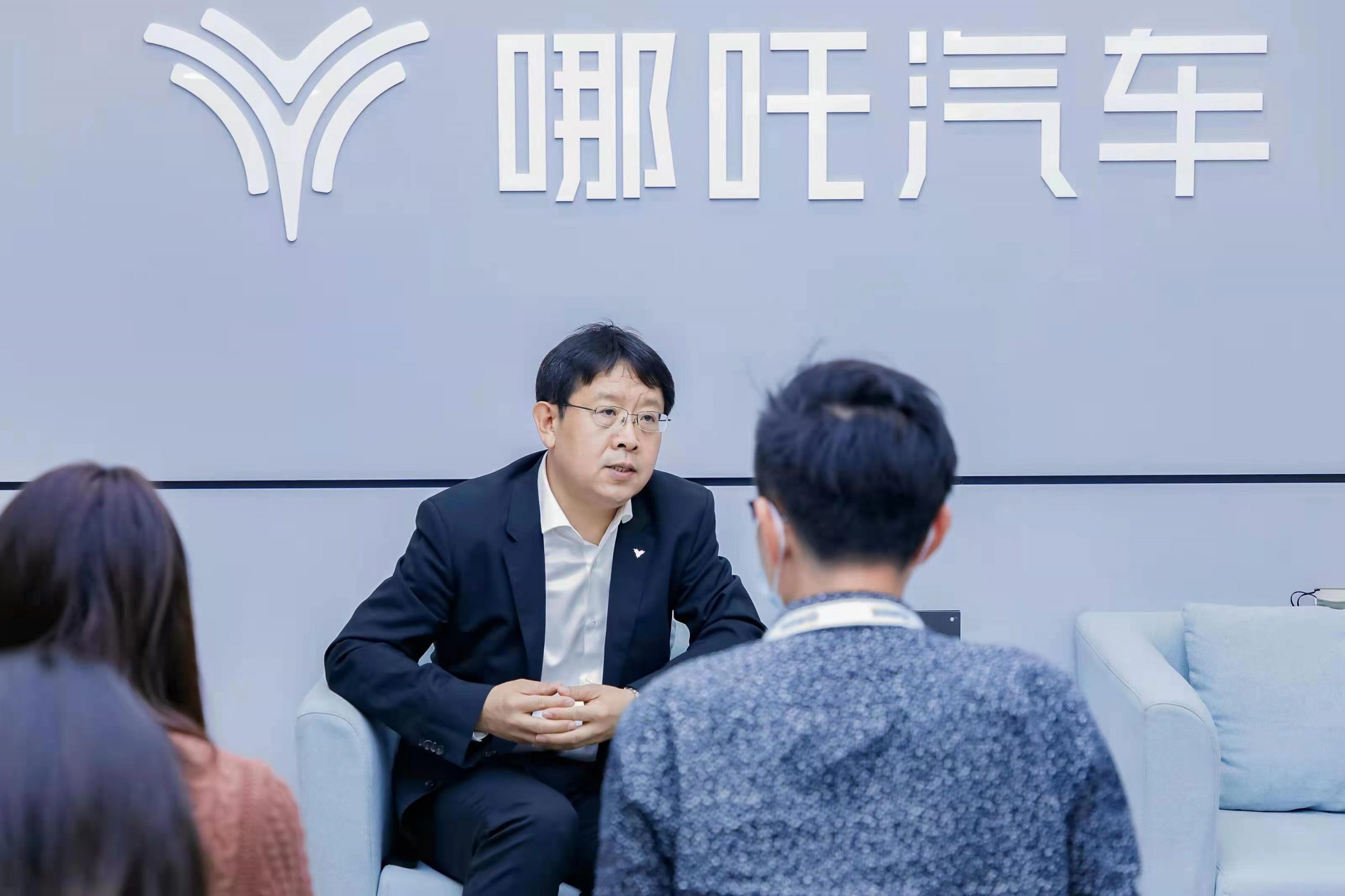On November 19th, NETA S officially debuted at the Guangzhou Auto Show, along with NETA’s Shanhai platform. At the press conference, NETA CEO Zhang Yong stated that the Shanhai platform that NETA S is equipped with has four characteristics: high safety, high extendability, high intelligence, and environmental friendliness. We cannot help but doubt whether this is just hype. After the press conference, we conducted a group interview with NETA CTO. Here is a summary:
Q: What are the advantages and highlights of NETA S compared to other products in the same period?
A: NETA S is the first product of Shanhai platform. Regarding power, there is no problem, and it offers two versions: pure electric and extended range. In the future, we will also offer four-wheel drive to ensure good acceleration performance.
Regarding assisted driving, we will use a fusion of radar and visual perception, and can support up to 13 cameras. The model that will be launched next year will be equipped with three laser radars to meet the needs of scenarios involving autonomous parking and low-speed parking.
Q: Shanhai platform has a strong extensibility. What is NETA’s plan for the future?
A: In addition to NETA S, we will introduce more models in 2023 and 2024. It has not been publicly announced yet, but perhaps we will reveal our upcoming mass-produced models at the next auto show. 2023 will be a big year for our products, with new models being launched in both the first and second halves of the year, as well as annual updates. For example, next year, U Pro will be upgraded with new functions in intelligent driving and cabin design.
Q: What does “technological equality” that NETA has been talking about mean?
A: There are many intelligent technological products in our daily lives, and our goal is to make high-quality electric cars accessible to everyone. In other words, we want to bring technology out of the laboratory and academic papers and incorporate it into our daily lives to give users a new experience in intelligent technology. This not only applies to the car’s interior but also includes car services, performance, and human-machine interaction.
Q: There are already a lot of new energy vehicles on the market, covering almost all price ranges and levels. Why did NETA choose to launch this car at this time?
A: In every price range, there are still some unsatisfied users. In the market for class B cars, we can see that NETA S has achieved integration in terms of power, space, practicality, and personalization.
Next year at the Beijing Auto Show, we will release the interior design of NETA S. By then, we’ll be able to see that users’ demand for practicality can be met by NETA S.
Q: During the morning press conference, Mr. Zhang mentioned the high extendability of the Shanhai platform, which will have 4 body forms and 80% part commonality, reducing R&D time by about 8 months. Does this mean that the product line will be rapidly expanded in the next 2-3 years?A: Yes, but not so fast. We are working on it now, and we can confidently tell you that we will launch a unique concept car. The current architecture can accommodate these models, and we will meet the needs of different segments and price points.
Q: Apart from safety, has the investor made any technical investment in intelligent cabins and intelligent driving?
A: 360, as our investor, is not only an investment. We have collaborated on the car security brain to allow users to experience the trust brought by safety technology. In the field of intelligent cabins and autonomous driving, 360 has accumulated relevant experience, such as big data processing and artificial intelligence. In terms of autonomous driving, we have also cooperated in perception training and data accumulation.
Q: Compared with traditional automakers, what advantages do you think you have in the R&D process?
A: In fact, in terms of R&D, both new forces and traditional automakers respect the laws of R&D. As for the advantages, the sensitivity and timely response to user needs and the use of innovative technologies to meet user needs will be more prominent in terms of capabilities. We will be relatively weak in R&D resources and technical accumulation. Therefore, we can only make up for it by learning quickly. In the field of intelligent technology, we are all newcomers. Whoever can speed up R&D and quick investment will occupy a leading position.
Q: Why did you choose “Shanhai” as the new form of technology?
A: “Shanhai” is associated with “The Classic of Mountains and Seas” and “NETA” in Chinese traditional culture. Such as the tall and grand mountains, and the magnificent waves of the sea. It also expresses our confidence or a kind of promotion to catch up or go to a broader market competition in the future, which is the embodiment of the spirit of Deautomobile.
Q: Is NETA S starting to occupy the mid-to-high end market?
A: Compared with last year, there are two obvious trends this year: electrification is gradually accepted by users, and the penetration rate of new energy markets has increased significantly compared with last year. We entered from mid-to-low-end products this year. In fact, there are still many demands that have not been met in the 200,000 to 300,000 price range. We will also use our technology to fill this market. I believe that in the future, the mass and broader market of automobiles will be at the 150,000 to 200,000 price range, which is the main A-class car market. It’s like we brought cars into families from the low-end and gradually developed towards high-end, expanding more markets.
Source: NETA Official
This article is a translation by ChatGPT of a Chinese report from 42HOW. If you have any questions about it, please email bd@42how.com.
